Buildings Around the World That Used to Be Pizza Huts
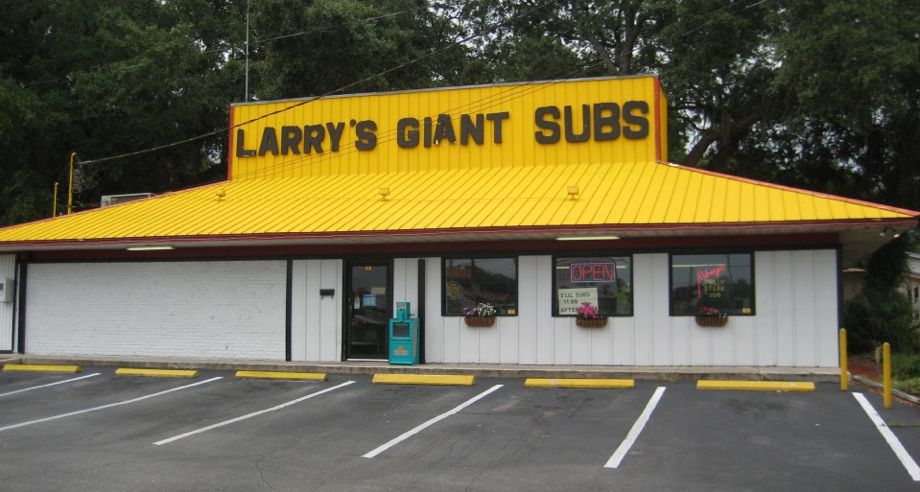
Courtesy of Mike Neilson
The best design podcast around is Roman Mars’ 99% Invisible. On it he covers design questions large and small, from his fascination with rebar to the history of slot machines to the great Los Angeles Red Car conspiracy. Here at The Eye, we cross-post his new episodes and host excerpts from the 99% Invisible blog, which offers complementary visuals for each episode.
This week's edition—a look at the architectural history of Pizza Huts—can be played below. Or keep reading to learn more.
It started with some Pittsburgh humor.
Pittsburgh-based comedian Tom Muisal does a bit about a GPS unit that can give directions in “Pittsburghese.” Because in Pittsburgh, no one calls it “Interstate 376.” It’s “The Parkway.” It’s not “The Liberty Tunnel.” It’s “The Liberty Tubes.”
And directions are often given by way of what used to be there.
One day Tom was trying this routine out on his friend, Mike Neilson. Mike is not from Pittsburgh—he grew up on the other side of the state. When he moved to the Steel City, he had a hard time figuring out how to get around. Because Pittsburghers are always telling him to turn left at something that isn’t there anymore.
And then, as Mike was listening to Tom’s Pittsburgher GPS routine, he noticed that in in one iteration of the joke he said, “turn left at the place that used to be a Pizza Hut.”
This resonated with Mike. He realized that, because the architecture of a Pizza Hut is so distinctive, he could easily identify any building that used to be a Pizza Hut. The former Pizza Hut was thus a beacon of light shining through a thick fog of impossible directions. Here, in his friend’s comedy routine, was the one Pittsburghese direction he could give that anyone, regardless of where they’re from, could comprehend:
Turn left at the place that used to be a Pizza Hut.
For the unacquainted, this is the archetype of the dine-in Pizza Hut:
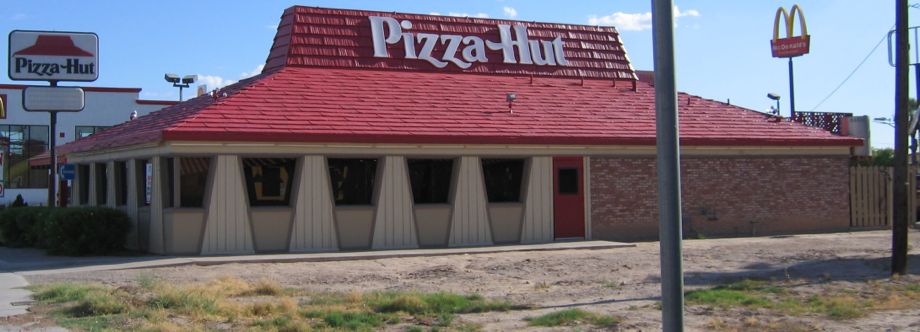
Courtesy of Tom Arthur via Wikimedia Commons
There are two identifying features that make Pizza Huts look distinctive. First there’s the shape—it’s like the whole thing is built out of trapezoids. Second, there is a roof hump that shoots straight up over the trapezoidal awnings.
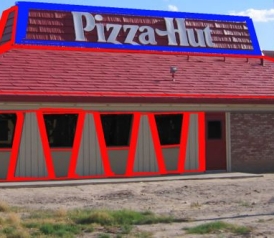
Not every Pizza Hut looks like this. Franchise owners have a lot of freedom, so not every Pizza Hut has the “lid” roof, and the trapezoid features in some might be more striking than in others. Yet there’s still enough commonality among Pizza Huts that once you’ve seen one, you can easily identify any other.
And, you can easily identify any building that used to be a Pizza Hut.
The aforementioned Mike Neilson has been building a global atlas of buildings that used to be a Pizza Hut. He calls them UTBAPHs, the abbreviation for “Used to Be a Pizza Hut.”
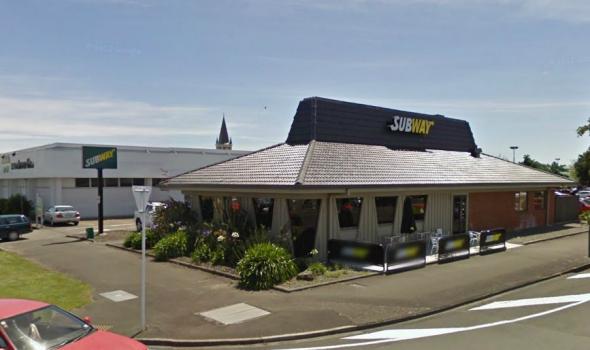
Courtesy of Mike Neilson
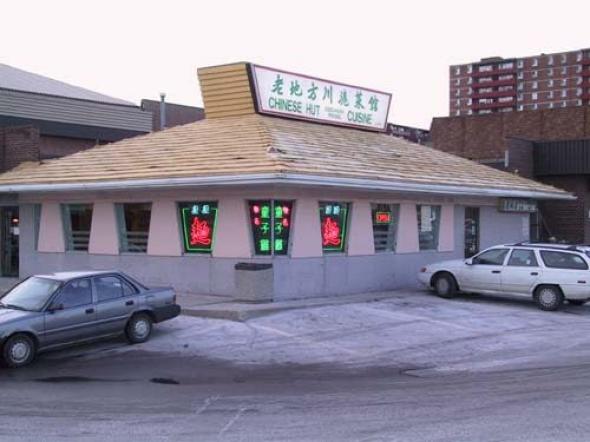
Courtesy of Mike Neilson
For the Des Moines Police Traffic Unit in Des Moines, Iowa, Neilson writes:
“We all love the idea of the police chief telling all of the cops week after week that if they don’t get their shit together and get traffic violations under control, they will have to work at a Pizza Hut, then the mayor coming in and breaking the news that they would, indeed, all be working in a Pizza Hut. Evidence room in the cooler. Interrogations happening in the booths. Secretaries playing table-top Pac-Man instead of solitaire. That is how I picture this one, and I love it.”
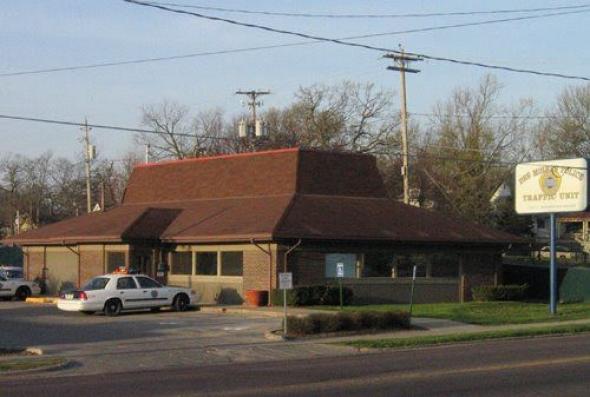
Courtesy of Mike Neilson
Pizza Hut never meant for architecture to be the focus of their brand—at least at first.
The first Pizza Hut was opened 1958 in Wichita, Kan., by brothers Dan and Frank Carney. The story goes that after they bought their first building, they got a sign that only had room for eight letters. They figured the first five ought to be “Pizza.” Looking at the building, someone decided that one way to describe their building in three letters would be to call it a hut. So they called it Pizza Hut.
As you’ll notice, there’s nary a trapezoid anywhere.
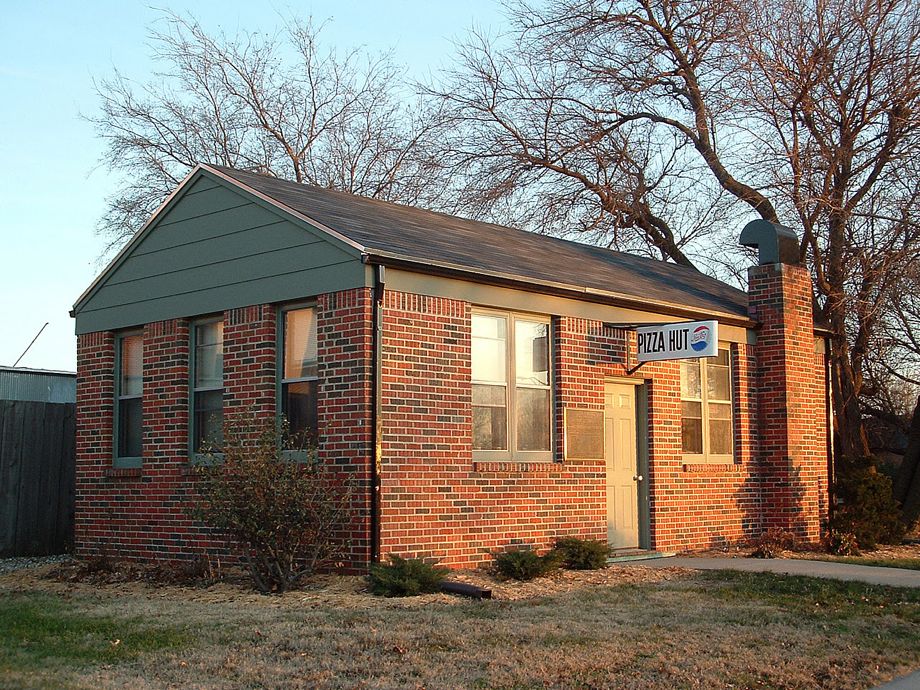
Courtesy of Sanjay Acharya via Wikipedia
Pizza Hut’s signature look was developed later. It was the work of architect Richard D. Burke, a friend and classmate of the Carney brothers. Burke wanted $32,000 to do the design. The Carneys gave a counter-offer of $100 per Pizza Hut to subsequently open. Burke accepted, and created a lot of the features that we can now recognize today as irrefutably Pizza Hut’s.
From there, Pizza Hut’s architecture and its corporate image became intertwined.
And so the Carneys and their franchisees began lining the American landscape with Hut after Hut after Hut. But in its ascendancy, Pizza Hut couldn’t, or simply wouldn’t imagine a time when the people would not come out in droves to enjoy a personal pan pizza or a zesty breadstick. But market trends shifted from the dine-in experience to delivery. Many Pizza Huts closed. And as their trapezoidal windows went dark, and their roof humps rose up over empty parking lots, it was as if the company had littered the world with monuments to its own decline.
Even though Pizza Hut is not knocking down closed restaurants, it's curbing the continued rise of UTBAPHs. In the late 1990s and early 2000s, Pizza Hut shifted toward a carry-out and delivery model. Today, about half of the Pizza Huts in the United States operate out of generic-looking structures.
When these new-style Pizza Huts go out of business, the UTBAPHs they leave behind are completely unrecognizable as such.
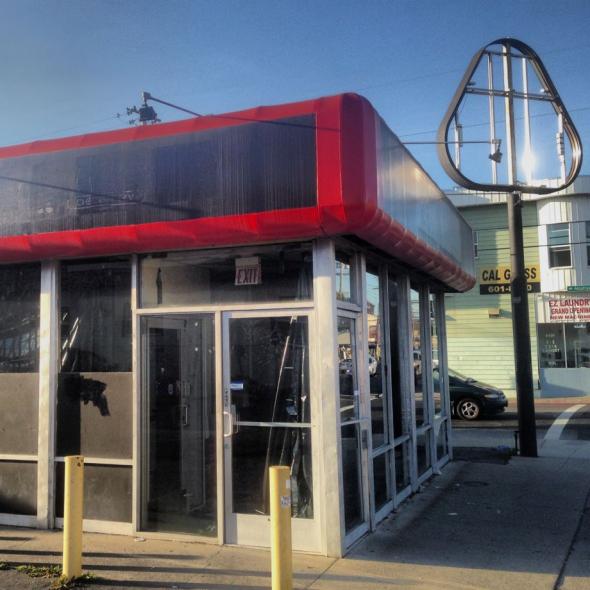
Courtesy of Sam Greenspan
Many overseas Pizza Huts are following suit.
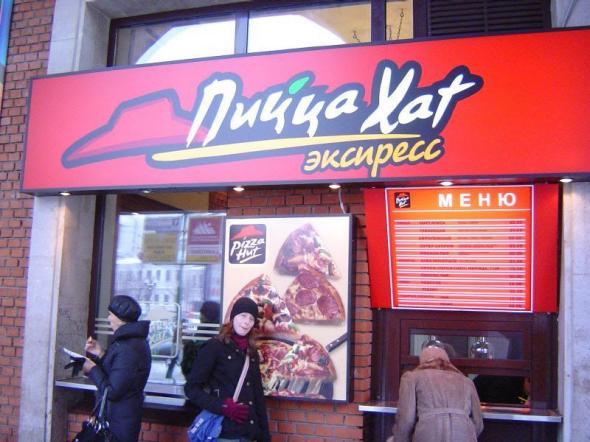
Courtesy of Maarten via Wikimedia Commons
But if Pizza Hut phases out its signature buildings, it will be a huge mistake. Because Pizza Hut has achieved a level of greatness here. How many other structures have there ever been in history whose true essence can shine through whatever might come after it?
So let us stand in awe of the mighty Pizza Hut! Which—more than just about any other once-beloved establishment since crumbled beneath the sands of time—can reach into the future and proclaim: Just try and forget about me. Just try.
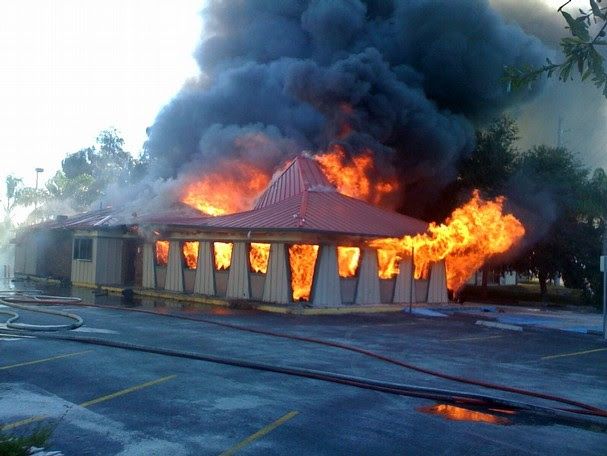
Courtesy of Mike Neilson
To learn more, check out the 99% Invisible post or listen to the show.
